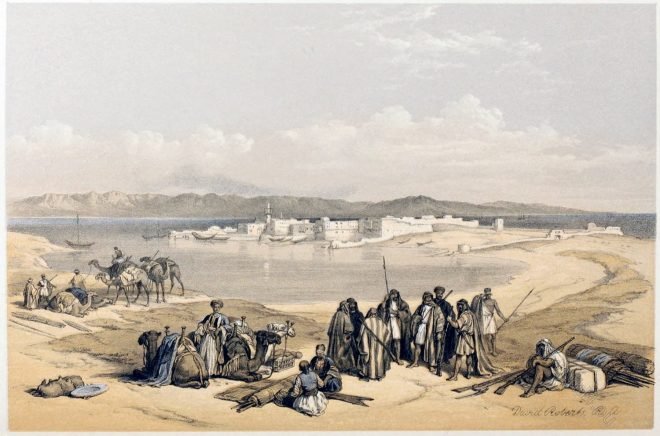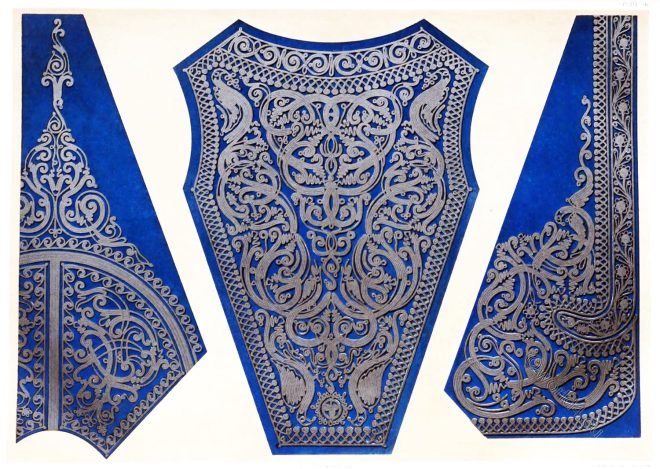The figures represent inhabitants of Monte Cassino, the old Casinum, in the Terra di Lavoro, as they walk through the streets of Rome as models and through the capitals of the mainland as musicians.
General View of Suez. David Roberts set out from Cairo for the Holy Land.
David Roberts set out from Cairo for the Holy Land on 7 February 1839, with a small caravan including servants in Arabian and Turkish dress
Forest Scenery near Adams Peak. Sri Lanka 19th c.
The silence of the tropical rainforest on the ascent to Adams Peak in Sri Lanka and the almost complete absence of animal life.
Scene on the Quay of Suez (Egypt) and its future significance.
It is perhaps too early to predict the future importance of the relatively quiet quay of Suez, the direct passage between Europe and Asia through the Red Sea.
Approach to Mount Sinai. Wady Barah. Men resting their camels.
Men resting their camels and smoking by the approach to Mount Sinai. This View is taken from the Encampment at Wady Barah of the Artist and his party.
The Scottish clans. The Tartan of Robert Bruce, King of Scotland.
The first Robert Bruce came to England as a knight of Normandy, in the wake of William the Conqueror. After William’s victory over Harold, he sent him to the northern parts of England to subdue them.
Transitional Female costume. Elizabethan fashion 1550 to 1620.
Transitional Female costume between the Elizabethan and Charles I modes. Elizabethan fashion 1550 to 1620.
Travelers at the wells of Moses, or Eyun Musa
Travelers at the wells of Moses, or Eyun Musa, on the eastern side of the Gulf of Suez.
The Homeric costume of early Greeks. Dress of ancient Greece.
The early Greeks are called Homeric, because they were the people who waged the wars described by Homer in his poems.
Greek Embroidery. Portion of a rich Fermeli, or upper jacket.
Portion of a rich fermeli, or upper jacket, which was included in a complete suit of elaborate Palikar costume.










